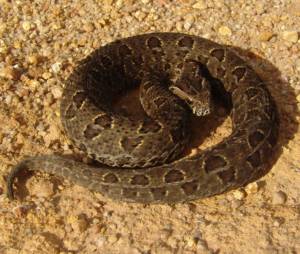Gavin Raubenheimer and Caroline Storrar
“Lesotho is not for sissies” is a notice scrawled on the wall in the pub at Sani Pass. The inscription is probably referring to the icy winters, rutted roads, corrupt border officials and the high price of beer. But it could be equally applied to the mountain biking in the Highlands of this small, wild, little Kingdom.
Since the time of the great southern continent of Gondwanaland, time and the elements have been eroding away a thick crust of Basalt rock, which lies over what we now call the Lesotho highlands. In a few places the ancient rocks have managed to resist a little more than their neighbouring hills and valleys. One small patch of rock, not much bigger than a netball court, has done a little bit better than anywhere else and stands slightly higher than its neighbours.
In Easter 1951 an intrepid group of mountaineers lead by the legendary Natal climber, Des Watkins, trudged to the top of this small, circular mountain near Sani Pass. They carried, amongst other things, a land-surveyors theodolite and established the height to be 3482 meters above sea level. Sixty three years later we knew the peak’s height but instead of carrying survey paraphernalia, we decided to ride, push and carry bicycles to the top!
Thabana Ntlenyana is today recognised by map makers as the highest point in Africa, south of Mt. Kilimanjaro. It is not a spectacular mountain in the greater scheme of things; in fact, it is hardly more than a small rampart of rocks set on a high ridge. But to avid mountain bikers its approaches are laced with fantastic, single-track riding, enough to keep one busy for days. Our mission was to get to the top and then head westward down the Sakeng Valley, in the direction of the main road and the St. James Mission station. These single-track paths of the Sakeng area, forged by cattle and shepherds, make for some of the best riding in Lesotho. They are steep, rugged and narrow and go on for over 40 kilometres.
The trip and the riders
Caro, my riding partner and I recruited four extra people to join us on the adventure. There were two other riders. There was Annie, a school counsellor, who is never found wanting for words in any area of discussion, which helped to ensure that there were no awkward pauses in conversations. Then there was James, the engineer, who seems able to explain how all things mechanical or chemical are made, put together or blown up. We also had two support crew members: Kim was the back-up-driver who put the Engineer’s 4×4 through all sorts of mechanical tests up and down the mountain passes and Audrey, our other driver, who arrived with her much adored short-wheel-base Land Rover. Auds has a love for her Landies, both young and old (she owns 2 vintage models), and all places far and away with bad roads.
We headed off from our starting point at Sani Backpackers Lodge near Underberg, with about 30 kilometres of relatively easy up and down dirt road leading to the South African border post. The ride was made far harder on the day, by a brisk westerly wind blowing in our faces. The back-up vehicles leap-frogged ahead of us as we battled slowly towards the foot of Sani Pass. The main exam of the first day was to get from the South African border control up the 9 kilometres of rugged pass and onto the Lesotho plateau. We now slowed to walking pace and granny-gear was starting to be used more and more. Conversation levels dropped, even silencing the Counsellor for short periods of time. The road surface of Sani is rough and it had just been scraped, making its surface loose under our knobbly tyres, and now tiring legs. It was not made any easier by the constant headwind that we faced. We were covering ground (road) that had been built some five decades before in order to bring trade to a remote area of then Basotuland. The name Sani, is derived from the name of a local chief from many years ago. The basic bridal path to the top of the mountains was first made during 1933 as part of a South African government public relief program, during the Great Depression. For decades this bridal path was used by traders from Lesotho, bringing mohair and wool for sale in South Africa and, on return, the transporting of wheat, maize and building materials. At times there were an estimated 300 transport riders and 5000 pack animals using the pass regularly. At the bottom of the pass and not far from the now Sani Pass Hotel, was a trading-post where the goods were sold and bought. The remains of these buildings can still be seen today. The Lesotho side border post in those days was in actual fact situated some 3 kilometres inside South Africa, just below where the road begins to zigzag up the final section of the pass. The office, rest-house and a small bridge are still visible below the road.
In 1947 a Durban businessman, David Alexander began to explore the possibility of starting a motorised transport system and had hoped to try and drive up the bridal path in a Willys Jeep. He was beaten to it however, when a certain Brian Gray and Godfrey Edmonds ascended the pass on 26 October 1948. Edmonds did the driving of the Jeep, and they not only ascended the pass, but also went over Black Mountain and on to Mokhotlong, all in one day.
James, Caro and I pushed our bikes up through the last hairpin bends until we crested the edge of the escarpment. The Counsellor was determined to ride all the way to the top. With the gale force headwind and loose surface, this proved to be an almost impossible task and she ended up lagging far behind as she zigzagged from one side of the road to the other, providing much entertainment to the rest of us. From the lip of the mountain, it should have been an easy 200 metre ride to the border post. Instead, the force of the wind almost pushed us backwards. So, the bike pushing continued (the Counsellor had decided to join us in pushing by this stage) and we huddled for a few minutes in the lee of the border control office.
Then we braved the final 8 kilometre ride westwards to Sani Stone Lodge near the foot of Black Mountain Pass. The wind did not cease and we moved on at snail’s pace, despite the fact that it was a gradual downhill. At times we were blown onto the road verges or else found ourselves tacking diagonally into the wind like a yacht, going nowhere fast. At last we turned off for the lodge, then had an easier ride for the last few kilometres and were welcomed by our drivers, shelter and plenty of cold beers.
Sani Stone Lodge is situated off the road and overlooks the river by the same name. It is a delightful and rather esoteric place to stay, with plenty of rustic charm. It consists of a self-catering bunkhouse, individual rondavals and a very modern, out of place bar, located in a separate building. We spent a wonderful night in warmth, thanks to a paraffin heater and the shelter from the strong icy wind outside. There were even hot, gas heated showers. The staff were extremely friendly and helpful and ensured that the gas worked and heaters were kept going. The bunkhouse had a small open plan kitchen with cutlery, crockery, cooking pots, pans and utensils and a stove. The kitchen adjoined a dining area, which was surrounded by bunk beds on two sides. There was a separate sitting-room where we all relaxed on couches near to the heater, nursing our tired muscles.
Day two dawned – the big day for summiting Thabana Ntlenyana and negotiating the long descent to St. James Mission. The gods had been kind – there was not a hint of any wind. It was also the day with the best riding of all. The Counsellor and Engineer, having been temporarily silenced the day before, resumed their rightful places and we were again tested on our moral opinion and chemical mixing knowledge.
We back tracked to the main road, pausing for a large flock of sheep on the way (Lesotho’s version of a morning traffic jam). We crossed the road and then portaged across the Sani River and onto several kilometres of wide, flat grassland with intersecting sheep-paths coming and going in all directions. Caro was looking strong and, as usual, cycling with a huge smile on her face as the easy windless riding ate up the miles. Navigating by topo map we headed upstream to the first portage: A long rough mountain side where we each slowly sorted out the least uncomfortable way of carrying our bikes. Bicycles are not made to be carried and our bodies soon reminded us of this, as they were pushed, poked and bashed by various pieces of projecting metal. The handlebars had a particularly nasty habit of smacking their master in the face. James discovered he could wear his like a necklace, by sticking his head through the frame triangle- an engineering marvel.
We found many excuses to stop and admire the scenery as we struggled up the paths. Then, after reaching the top of the first ridge, we lowered our saddles right down for extra stability and swooped down to the next river. The second and last big carry of the trip was up the final hillside and ridge to the summit of Thabana Ntlenyana, or as translated into the local dialect, “the nice little mountain”. This took about another hour and, as we crested the ridge, the wind was back in our faces. Sections of the final summit ridge are ride-able, but technically hard and the breathlessness caused by being above eleven thousand feet certainly added to the drama. We summited the peak, portaging our bikes in a then familiar manner, and celebrated briefly at the top by taking a few photos before quickly seeking shelter just below the ridge.
This was our lunch stop and we admired the views of the escarpment to the east of us. A cold-front was just starting to hit KZN and, from our high vantage point, we watched an endless boiling mass of clouds buffeting the cliff-line some five kilometres away. We had taken almost four hours to get to this point, a distance of only 14 kilometres from Sani Stone Lodge, and we knew the bulk of our safari still lay between us and St. James mission. From the summit the route goes west for a few kilometres and into wide open, green meadows of short grass, interspersed with low hillocks. This area forms the water soaked source of the Sakeng River, which we were to follow for the rest of the day. Speed on the down hills was the order of the day and we flew over great stretches of single-track paths until entering the main valley. Here we opted for the right-hand bank for a few kilometres, as the path seemed better on that side. We later found out that the path size increased the further west we moved. From starting out on small sheep paths we progressed to sheep multi-lane highways which gave way to single track bovine paths which again became multi-lane affairs. By the end of the valley, some 30 kilometres distant, we were on vehicle negotiable tracks.
With the valley growing in size, options of travel appeared on both sides of the now large highland valley. After two hours of riding and some more portaging over rocks and boulders, the first village appeared, set well above the river in an idyllic setting. Its only connection with outside world is a single dirt path in the direction we were travelling. Remote Lesotho villages are pleasant places to pass through and seem to be run by hard working old woman who command respect over beast and child alike. From a distance they are gentle places of slow moving people, animal sounds and red dust. The villages with no road access, and there are many, even have children of school going age who have never seen cars or European people.
In each hamlet we were treated like VIPs as children and adults alike tumbled out of huts to wave us by. The word “St James” quickly got us frantic hand waves and signals to show the way through the sometimes complex paths of these highland villages
The single-track biking soon became a choice of multiple routes through sometimes extremely steep ravines. These obstacles are made even trickier by having to negotiate obstinate cows, sheep and chickens, the latter of which liked to taunt death by waiting until the last moment before darting out from in front of our knobbly tyres. Our ever chatty Counsellor also decided to cheat death and, in a moment of non concentration, took a dive over her handlebars whilst descending a particularly steep drop-off. It was a spectacular event to witness and in gymnastic terms she would have been given a 9.8 for style, but lost points for her landing. Although sore and slightly broken, the chatting soon resumed and we knew all was well. Live stock is everywhere and in one village, a young lamb, sensing the Engineers latent motherly instincts, caused much mirth as it set off after him for about a hundred yards until it’s mother called it back and it ‘sheepishly’ remembered to which species it belonged.
At last, with the sun dipping behind the Maloti mountains, we arrived on the Mokhotlong road and after some twists and turns got onto the St. James mission route, now in almost total darkness. Eventually with tired bodies, we stopped to turn our head-torches on to complete the last few kilometres and declared that this was officially an ‘epic’expedition.
St. James Lodge is a well run little establishment on the outskirts of the St James mission station and a fine place for weary riders. We were once again welcomed by our backup team and settled down to another chilled evening sharing tales and nursing tired bodies in front of the fire.
Due to time restraints and to avoid riding along a road in the process of being blasted in preparation for tarring, we opted out of the full ride back over Black Mountain Pass on the last day. Instead we only cycled from the summit of the pass down its rutted zigzags and back to the Sani border post. As we neared the top of Sani pass, the blue skies disappeared suddenly and we entered a wall of mist and cloud. The temperature was close to zero as we layered up to start the freezing but breath taking and, at times, nerve wracking descent back into South Africa and the hum drum of ordinary life. THE END
Info
Day one of this ride is approximately 40km and is all on district roads and also ascends Sani Pass. Day two is by far the hardest and is about 60kms and requires portaging bikes up mountain slopes and across rivers. There are numerous paths near to the habituated areas. Good navigation using a topographical map is essential. The final day, if ridden would be about 90km all on dirt roads. The Black Mountain Pass road is being tarred and widened at present and unfortunately much of its rustic charm has now gone forever.
It is essential to book in advance for St James Lodge www.stjameslodge.co.za and Sani Stone Lodge.+ 266 5900 2441.
Maps
Available from PMB Maps in Pietermaritzburg.
About the authors
Gavin Raubenheimer is a professional mountain guide and instructor based in Hilton KZN. He has climbed and guided in most of the major ranges of the world.
Caroline Storrar is a physiotherapist in Pietermaritzburg, an avid mountain biker who has cycled in South Africa, England and the Himalayas.


